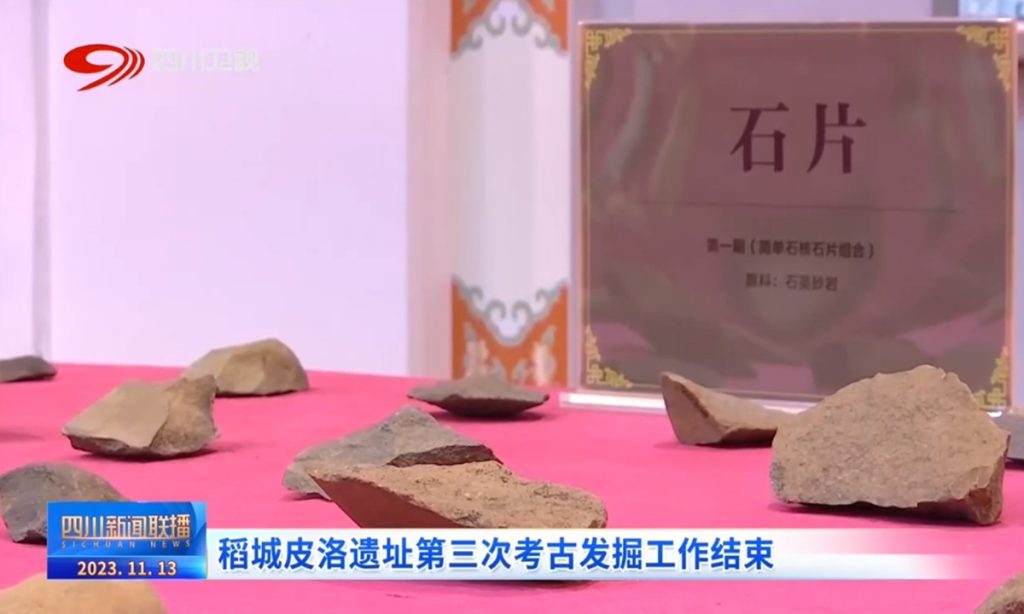More than 3,000 Old Stone Age artifacts unearthed in SW China

More than 3,000 stone tools have been unearthed during the latest excavations at the Piluo site, a large-scale Paleolithic site that can be traced back to more than 200,000 years ago in Daocheng county, Southwest China's Sichuan Province, reported by the Sichuan TV on Monday.
The Piluo site, located at the southeastern foothills of the Qinghai-Xizang Plateau at an altitude of about 3,750 meters, has revealed more than 15,000 stone artifacts, including hand axes and thin-blade axes, since the commencement of the archaeological excavations in April 2021.
The latest phase, kicking off in July, is the third of its kind and covers approximately 150 square meters, providing archaeologists with crucial materials to comprehend the stratigraphic accumulation, artifact distribution and stone tool making across different regions of the site, according to the report.
Tan Peiyang, a deputy director of the Old Stone Age archaeology research institute at the Sichuan Provincial Institute of Cultural Relics and Archaeology, said that during this year's excavation, they found out that some areas had layers less than a meter thick, while others had layers as thick as seven to eight meters.
This variability allowed them to construct a chronological framework spanning from 200,000 years ago to tens of thousands of years ago, Tan added.
The Piluo site not only unravels the layers of history but also presents a continuous cultural sequence, showcasing the evolution of stone tool technology during the Paleolithic era.
One notable finding is the "Acheulean technology deposits," consisting of hand axes, thin-blade axes, picks and stone knives, making it the world's highest-altitude Acheulean technology site, which also demonstrates the ability, methods and historical progression of ancient humans in conquering high-altitude extreme environments as early as 200,000 years ago, the report said.
"Tools like the Acheulean hand axes represent the first standardized tool in human history. With a symmetrical, teardrop-shaped design, these artifacts not only served practical purposes but also exhibited aesthetic features. This technological advancement reflects a significant shift in early human cognition," Tan noted.
During the excavation, the archaeological team conducted systematic surveys of the surrounding areas, discovering multiple Paleolithic sites, with the highest at elevations surpassing 4,300 meters.
The Piluo site's archaeological pavilion, integrating excavation, exhibition and research functions, is set to open in June 2024, the report said.
The discoveries at Piluo site have been listed as one of China's top 10 archaeological revelations of 2021, recognized by the National Cultural Heritage Administration.